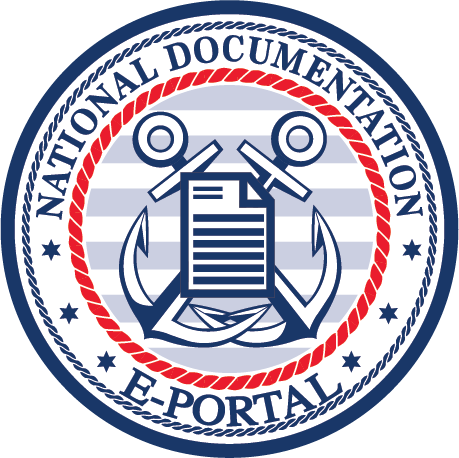When it comes to United States Coast Guard (USCG) vessel documentation, many owners know to focus on their vessel’s name, ownership, and registration status. However, another important and often overlooked element is the hail port, also known as the “hailing port.” This is the U.S. city and state listed on a documented vessel’s stern, displayed just below the vessel’s name. It’s a required part of documentation and plays a role in identification, compliance, and ownership representation.

At the National Documentation Portal, we assist vessel owners in not only selecting their hailing port during the initial documentation process but also in applying for changes if the owner decides to update it later. We make the process smooth, efficient, and digital—ensuring your vessel remains compliant with federal requirements without unnecessary delays.
What Is a Hail Port and Why It Matters
The hail port is the official home port of record for a documented vessel. It does not indicate where the vessel must be physically located or even where it typically docks. Instead, it serves as an official identifying detail included on your Certificate of Documentation.
Under USCG regulations, a documented vessel must display both the vessel name and the hailing port in visible letters on its stern. These markings help with vessel identification and are required for domestic and international maritime compliance.
Your hailing port becomes part of the federal vessel record. It stays tied to your documentation unless you officially request a change, which is a service we offer at the National Documentation Portal. Having an accurate and legally compliant hailing porton record and displayed on your vessel can help prevent complications during inspections or interactions with federal authorities.
Choosing a Hailing Port: What Qualifies and What Doesn’t
Contrary to what some vessel owners may believe, your hailing port does not have to be the port where your boat is moored or stored. In fact, the USCG allows a great deal of flexibility when it comes to selecting this location. You are free to choose any city and state within the United States—even if the city doesn’t have a marina, harbor, or port facility.
The key requirement is that the hailing port must be a recognized geographical location within the United States. You can’t list a foreign city, and the name must be spelled out completely, including both city and state. Abbreviations are not accepted. For example, you should enter “Pittsburgh, Pennsylvania,” not “PIT, PA.”
This flexibility allows owners to use the hailing port as a form of personalization. You might choose your hometown, your company headquarters, or a city that holds special meaning to you. Some vessel owners opt for symbolic choices rather than practical ones, and that’s entirely acceptable under the law.
During the vessel documentation process on our site, you’ll be prompted to input your selected hailing port, and we make sure your entry meets federal formatting and location requirements.
How to Change Your Vessel Hailing Port Through Our Portal
If you’ve already documented your vessel and want to change your hailing port, you’ll need to submit an official request to the Coast Guard. This cannot be done through your regular documentation renewal. It requires a dedicated form and a specific submission.
We offer this service through our online platform. You can apply to update your hailing port, and if desired, your vessel name as well. The form we provide is tailored specifically for this purpose, and our digital system walks you through each section so you understand exactly what’s required.
To make the change, you’ll need to provide:
- The vessel’s current name and Official Number
- The new hail port (complete with city and state spelled out)
- Ownership verification details
- Signatures of all listed owners or authorized representatives
We help ensure that your application is complete before submission, reducing the chance of delays or rejections due to missing information. After the Coast Guard approves the change, a new Certificate of Documentation is issued reflecting the updated port.
Once that certificate is received, vessel owners are required to repaint or otherwise display the new hailing port name on the stern of the vessel, following the Coast Guard’s visibility and size requirements.
Marking Your Vessel Correctly After a Hailing Port Change
USCG rules specify how your vessel’s name and hailing port must be displayed. The markings must be:
- On the exterior portion of the stern
- In block letters
- At least four inches in height
- Clearly readable and in contrasting color to the hull
- Permanently affixed (painted, engraved, or otherwise durable)
Failure to display the correct hailing port may result in compliance issues, especially during inspections, while traveling in U.S. waters, or when entering foreign ports. That’s why it’s important to not only submit your change properly but also update your vessel’s markings accordingly once it has been processed.
Federal Consistency and Legal Use
Although the hailing port may seem like a cosmetic detail, it’s a legally required part of your federal documentation. It also serves as a point of identification for lenders, insurers, customs officials, and maritime authorities.
Having a mismatched or outdated hail port that doesn’t match your Certificate of Documentation can create problems in scenarios involving:
- International voyages
- Vessel financing
- Legal disputes over ownership
- Entry into foreign ports
- Coast Guard boardings or inspections
That’s why accuracy matters. Through our site, you can ensure your documentation and your vessel’s visible markings are always in alignment with federal standards.
Where to Begin When You’re Ready to Update Your Hail Port
When it’s time to designate or change your hail port, our site offers a clear path forward. From selecting a new port during initial documentation to submitting a name and hailing port update later in your vessel’s life, we provide everything you need to manage your documentation with accuracy and ease. That’s just one of the many forms we offer at our site.

